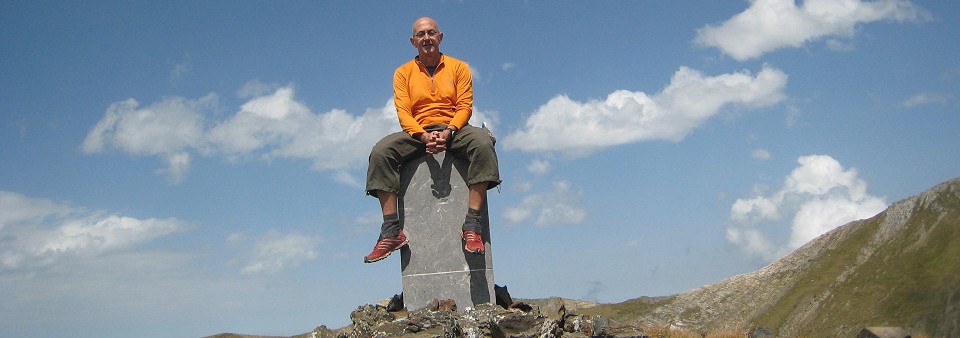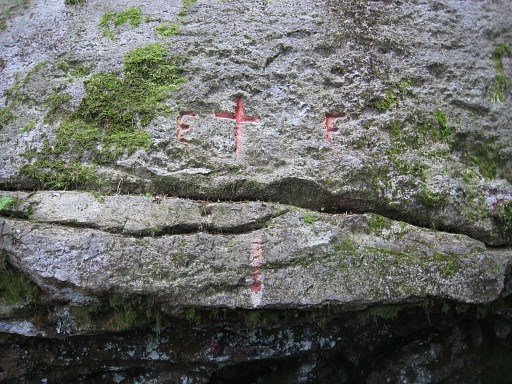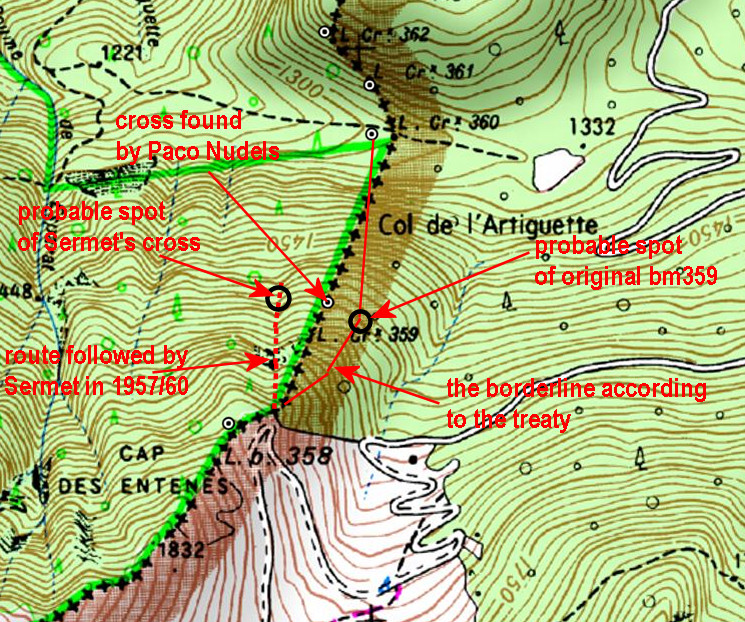The bordercros bm359 – engraved in 1863 – has never been refound on the very steep hillside between bm358 and 360. Jean Sermet was convinced that a 4x10m rockwall must have been the original spot and in 1957 he engraved a cross there. In 2009 Paco Nudels discovered a cross on a similar looking rockwall and I visited that cross twice.
But: is this the same cross as Jean Sermet engraved? And was this rock the very spot of the original bm359?
I will try the answer these questions in the next update of my website. But I can already reveil some of my conclusions on this map.
For my arguments, you will have to wait. A cliffhanger as it were and as a term corresponding to this very steep hillside. (Update 4/1/2015: update is ready -> see this page)



Hello, Eef,
Let me share some remarks on the following points:
1960 Abornement Haute-Garonne – Journal des opérations / by Jean Sermet : He wrote : “Il y a des marques de peintures sur les arbres. Françaises certainement, et pour marquer la limite internationale d’exploitation.” Which does not mean ” the official esfr-delimitation”.
“La montagne forme une sorte d’éperon en dièdre marqué”. A spur (« éperon » in French) is a relief and not a hollow (or ravine), in other “words” it’s in a shape of ʌ and not v. The border indicated on maps is thus valid.
We can recognize that part very well on the maps and it involves a different line than the current borderline on the maps! This « different » line is a ravine.
The curent divisoria-line passes the cross ± 50m to the east. As a rule, the divisoria is always considered as being a recognized authority although the negotiators sometimes broke the rule, making concessions on one side or of the other one, to guarantee peace.
The evidence suggests that Sermet followed a divisoria-line which was different from the actual one (more to the W). Nothing proves it.
Moreover: he mentions in the 1960-report the existence of a picture by a photographer from Lérida. In his report to the “Inspecteur Général” on the “Conditions of the Operations”, J. Sermet mentions the presence of the Lérida photographer for the Spanish side. We can thus deduct the existence of photos.
I look forward to seeing the outcome of coming expeditions!
Yours faithfully.
Charles, I know you are a great admirer of Jean Sermet and you have all reasons to be so because of his longstanding state of service. I have to do my very best to convince you.
It all comes down on the integral meaning of the expression “éperon en dièdre marqué”
You are right in the translation of ‘éperon’ as ‘spur’ but what is the meaning as a geophysical description? If we search in online we could translate it as a sharp ridge. So: 1-0 in favor of you. But why didn’t Jean Sermet use the word “crête” (= ridge) when he meant a ‘crête’?
The clue is in the word “dièdre”. Wikipedia gives right away the explanation we are searching: “En montagne, un dièdre est constitué par deux pans de rochers approximativement plans qui se rejoignent pour former un angle rentrant, à la façon d’un livre ouvert.” In English: “In the mountains, a dihedral consists of two sections of rocks that meet to form an inside corner, like an open book”. And what is the meaning of “marqué”? Well, in this sense: ‘carved’ (See this dictionary) which confirms the meaning of ‘dièdre’.
Summarizing: Jean Sermet meant a v and not a ʌ when he wrote “une sorte d’éperon en dièdre marqué”